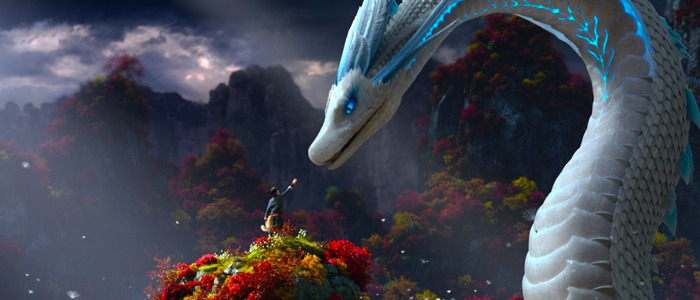'White Snake': Seeding The Future Of Chinese Animation In The East And West
The White Snake legend is one of the Four Great Chinese Folk Tales, shape-shifting into abundant texts, operas, movies, and television across China ever since it was published during the Ming Dynasty (1368 to 1644). While the tale is not eminent in Western pop culture, the 2019 computer-generated film White Snake may introduce the tale to Western eyes in its own style. Not that the fourth feature of the Beijing-based Light Chaser Animation Studio, teaming up with Warner Bros, adapts the tale itself; instead, it tells an imagined prequel with standalone qualities.
What is White Snake?
A mysterious woman with unfathomable magical powers attempts to assassinate a greedy human tyrant who consumes the souls of snakes to feed his powers. Her bungled mission results in her memory loss. She drifts off to a village of human snake catchers and finds a love interest in the local snake catcher, who helps her regain her identity. She passes as a waif-ish human woman on land, but she realizes she's a shapeshifting snake-demon serving an unfriendly demon faction. Her demon heritage and powers do not bode well for her existence among humankind. However, her human companion vows to defy the laws of nature so they can love in peace.With a backdrop of luscious China landscapes, White Snake wields the animation medium to imbue a velocity quicker than live-action wuxia, as well as deepen the romantic rudiments with vibrant colors. Its breathtaking existence should not be taken for granted in terms of the future of animation in China.
A Homegrown Success Story
Chinese animation has been struggling to craft its own identity and success throughout the last few decades, after a bygone golden age of animation in the '60s and '70s that was devastated by the Cultural Revolution. Big Fish and Begonia and Monkey King: Hero Is Back are homegrown exceptions that did well in China. But animated films that succeed at the China box office tended to be imports from the likes of studios such as Pixar. The barriers can range from a lack of investment to undernourished talents. Light Chaser co-founder Yuan Ye hopes the company remedies China's deficient animated identity by expanding opportunities for animators, recently remarking, "Although animation education in China has improved, when it comes to character effects or other technical skills, they don't teach any of it in universities — you can only learn it on the job in a company environment." White Snake has paid off in China as a box office success, earning 447 million CNY ($65 million). It played in competition at the Annecy International Animated Film Festival last month. White Snake is now the first Chinese-acquisition for GKIDS, an indie animation distributor known to release Studio Ghibli pictures, and it will receive a wider North American release as well as dubbing.
How Will It Fare in The United States?
As GKIDS will release White Snake later this fall, its critical and box office performance in the U.S. is too far away to predict. Its target audience in the U.S. is tentative as well. It delivers the Disney-esque goofiness of slapstick and a talking comedy relief critter sidekick, while paired with risqué elements that make it less family-friendly than typical Disney animation. Aside from its Western-friendliness, it blooms with fantastical flourishes distinct to its Chinese identity that may perk up general fantasy-lovers in the West – perhaps Studio Ghibli fans.When I attended the White Snake North American premiere at the New York Asian Film Festival, the film received applause. Though applause at film festivals is an arbitrary measure, I like to think of it as good luck for its future. Variety, The ReelBits, and Film Pulse have weighed in and praised the jaw-dropping visuals, even if they found some storytelling shortcomings. White Snake may or may not court prestige as far as the Academy Awards are concerned, but its success so far is a sign of Chinese animation maturing in the East while branching out to the West.


